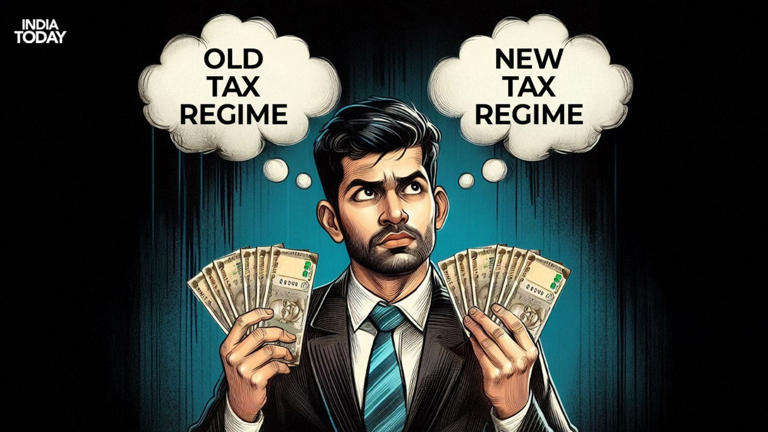Old vs New Tax Regime: How to Choose the Best Option for Filing ITR in FY 2025-26
As the new financial year FY 2025-26 begins and the previous one closes, taxpayers across India are preparing to file their Income Tax Returns (ITR). For those who are not subject to tax audits, the deadline for filing ITR is July 31, 2025. One of the most significant and recurring questions that arise during this period is whether to choose the old tax regime or shift to the new tax regime. The answer to this depends on a variety of personal financial factors including income levels, deductions, investments, and overall tax planning goals.
The Government of India introduced the new tax regime with the aim of simplifying the tax structure by reducing tax rates and removing most exemptions and deductions. For the financial year 2024-25, the new tax regime offers a rebate under Section 87A, making it highly appealing to individuals with annual incomes up to Rs 7 lakh, as they won’t have to pay any income tax. The revised slab system under the new regime ensures that income up to Rs 3 lakh is tax-free. Income between Rs 3 lakh and Rs 7 lakh is taxed at 5%, while the next slab of Rs 7 lakh to Rs 10 lakh attracts a 10% tax. For incomes ranging from Rs 10 lakh to Rs 12 lakh, the rate is 15%, whereas incomes between Rs 12 lakh to Rs 15 lakh are taxed at 20%. Any income above Rs 15 lakh falls under the highest slab of 30%. Moreover, the standard deduction under this regime has been raised to Rs 75,000 starting from FY 2024-25, which adds further benefit for salaried taxpayers.
On the other hand, the old tax regime continues to be a popular choice for many, especially those who claim multiple deductions and exemptions. Under the old regime for FY 2024-25, income up to Rs 2.5 lakh remains tax-free. Income between Rs 2.5 lakh to Rs 5 lakh is taxed at 5%, while the next slab, Rs 5 lakh to Rs 10 lakh, comes with a tax rate of 20%. Income exceeding Rs 10 lakh is taxed at 30%. This traditional structure provides several avenues to lower taxable income through deductions under various sections such as 80C, 80D, 80G, HRA (House Rent Allowance), and more. The standard deduction here is Rs 50,000. For those who have significant investments in life insurance, Public Provident Fund (PPF), National Pension Scheme (NPS), or pay housing loan EMIs, the old regime may offer considerable tax savings.
One of the main differences between the two regimes lies in the availability of deductions. While the old regime allows a wide range of deductions and exemptions, the new regime limits them to only a few such as 80CCD(2), 80CCH, and 80JJAA, in accordance with Section 115BAC of the Income Tax Act, 1961. This means that taxpayers who do not claim many deductions or wish to avoid the complexity of managing tax-saving investments might find the new regime more straightforward and efficient.
Choosing the right tax regime is a crucial decision and should be based on a careful analysis of your financial situation. There is no one-size-fits-all answer. If you are someone who does not invest much in tax-saving instruments and prefers a simple, hassle-free filing experience, the new tax regime may be suitable. However, if you have substantial tax-saving investments, recurring deductions like home loan interest, and health insurance premiums, the old tax regime could provide better savings and long-term benefits.
As we move into the new financial year, making an informed decision between the two tax regimes can significantly impact your overall tax liability and savings. Therefore, it is advisable to calculate taxes under both regimes or consult a tax advisor before finalizing your choice.
For more detailed video news and expert insights, visit our YouTube channel THE OLIGO.

